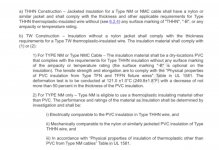Good question, ask the writers of Article 312.
Yes, 312.5(C) applies, so the cable needs to be secured to the cabinet. But if you use one of those metal NM clamp connectors with the clamp on the outside, the sheath could end between the clamp and the actual cabinet, so you wouldn't have any sheath in the cabinet. That's something I've observed and thought was a violation, but apparently only under Article 314, not Article 312.
As to the "also," I take that to apply to the preceding sentence concerning the "wall of an unfinished basement." It's not actually describing anything that isn't already allowed by 314.17 plus 300.15(C), I think.
Cheers, Wayne

